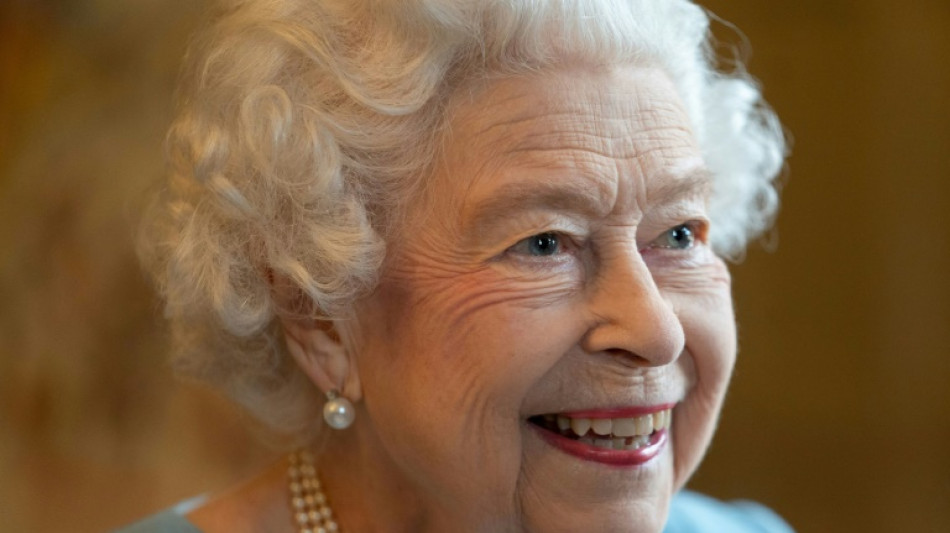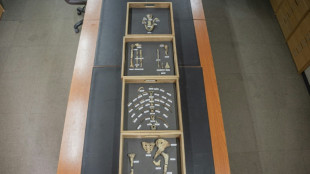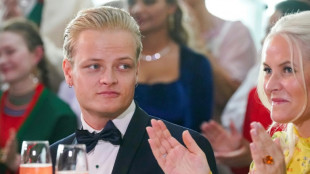

Britain and the world say farewell to Queen Elizabeth II
Queen Elizabeth II is laid to rest on Monday, after a grand state funeral attended by leaders from around the world, and a historic last ceremonial journey through the packed streets of London.
The longest-serving monarch in British history died aged 96 at Balmoral, her Scottish Highland retreat, on September 8 after a year of declining health.
The last state funeral to be held in Britain was in 1965 for the country's wartime prime minister Winston Churchill.
Then, the cranes that once unloaded the spoils of Britain's vast empire that Elizabeth inherited were lowered in respect as his coffin was borne up the River Thames by barge.
In the six decades since, Britain's global reach has been much diminished and its place in the modern world has become less certain.
But the country will still dig deep into its centuries of tradition to honour the only monarch that most Britons have ever known.
Many ordinary people have camped out for days to witness the elaborate spectacle of pageantry and to pay their final respects.
After the funeral, the flag-draped coffin of the queen, topped with the majestic Imperial State Crown, will be taken west to Windsor Castle.
She will be buried alongside her father king George VI, her mother queen Elizabeth the queen mother, and sister princess Margaret, reuniting in death the family who once called themselves "us four".
The coffin of her husband, Prince Philip, who died last year aged 99, will also be transferred to lie alongside her.
- Dignitaries -
Elizabeth's funeral could not be more different from Philip's at St George's Chapel, Windsor, in April last year.
Coronavirus restrictions limited mourners to just 30, led by the queen, a solitary figure in mourning black and a matching facemask.
On Monday, more than 2,000 people, including heads of state from US President Joe Biden to Japan's reclusive Emperor Naruhito, will pack Westminster Abbey, the imposing location for royal coronations, marriages and funerals for more than 1,000 years.
The queen's eldest son and successor, King Charles III, 73, will lead mourners, alongside his three siblings and his heir, Prince William.
Late Sunday, Charles said he and his wife, Queen Consort Camilla, had been "deeply touched" by the messages of condolence and support.
"As we all prepare to say our last farewell, I wanted simply to take this opportunity to say thank you," he added.
The queen's death has brought two of its most controversial members -- the queen's second son Prince Andrew and Charles's younger son Prince Harry -- temporarily back into the royal fold.
In the abbey pews will also be Liz Truss, whom the queen appointed as the 15th British prime minister of her reign just two days before her death.
All of Truss's living predecessors will be there too, plus her counterparts and representatives from the 14 Commonwealth countries outside Britain where Charles is also head of state.
Whether they remain constitutional monarchies or become republics is likely to be the defining feature of Charles's reign.
- 'Last duty' -
The queen's death has prompted deep reflection about the Britain she reigned over, the legacy of its past, its present state and what the future might hold, as well as the values of lifelong service and duty she came to represent during her 70-year reign.
"She was the glue that kept the country together," Andy Sanderson, 46, a supermarket manager who was among the last members of the public to pay his respects as her coffin lay in state, told AFP.
Some 6,000 military personnel have been drafted in to take part in the solemn procession to and from the abbey, on the route to Windsor and the committal service at St George's Chapel.
Britain's highest-ranking military officer, Chief of Defence Staff Admiral Tony Radakin, called it "our last duty for Her Majesty the Queen", their late commander-in-chief, and the first for Charles.
The abbey service itself, taking place under London's biggest-ever police security operation, starts at 11:00 am (1000 GMT).
After just under an hour, a bugler will play The Last Post, before two minutes of silence and the reworded national anthem, "God Save the King".
Former Archbishop of York John Sentamu said the queen, who headed the Protestant Church of England founded by king Henry VIII in the 16th century, did not want a "boring" send-off.
"You're going to be lifted to glory as you hear the service," he told BBC television on Sunday.
- Big Ben tolls -
Hundreds of thousands of people are estimated to have queued, sometimes for up to 25 hours and overnight, to file past the queen's coffin since it was taken to lie in state last Wednesday.
The doors of the cavernous Westminster Hall at the UK parliament will close at 6:30 am before the coffin is transferred to the state gun carriage and pulled by members of the Royal Navy to the abbey.
After the service, Charles and other senior royals will again follow in procession past hushed crowds to a waiting hearse and the final journey to Windsor.
Throughout, Big Ben, the giant bell atop the Elizabeth Tower at one end of the Houses of Parliament, will toll and guns will fire at one-minute intervals.
A vast television audience is expected to watch the funeral worldwide and live online, in a sign of the enduring fascination with the woman once described as "the last global monarch".
But E.J. Kelly, 46, who travelled with two colleagues from Northern Ireland to stake out a spot on the procession route on Saturday, said there was no substitute for being there.
"Watching it on television is wonderful but being here is something else," the primary school teacher told AFP.
"I will probably feel very emotional when it comes to it but I wanted to be here to pay my respects."
At Windsor, her crown, orb and sceptre will be removed and placed on the altar.
The most senior officer of the royal household, the lord chamberlain, symbolically breaks his "wand of office" and places it on the coffin.
A private interment ceremony will take place at the adjoining King George VI Memorial Chapel at 1830 GMT.
E.Bekendorp--HHA



